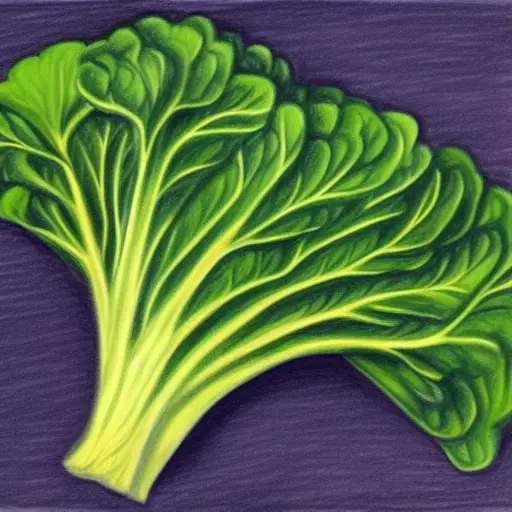Chinese broccoli is a leafy green vegetable that has a bitter taste and is similar to broccoli rabe. It is also an excellent source of vitamin E. If you are curious about Chinese broccoli, read on to learn more about this vegetable. It can be used as a side dish or in recipes.
Chinese broccoli is a leafy green vegetable
Chinese broccoli is a leafy green vegetable that looks a lot like a cross between broccoli and kale. Both broccoli and kale are members of the Brassica oleracea family. They have large leaves with a green stem and have a similar bitter flavor. This leafy vegetable is most commonly found in Asia, where it is not as difficult to grow. It is a good source of various nutrients and can be cooked in a variety of ways.
Chinese broccoli is packed with nutrients and is a good source of beta carotene, which helps prevent age-related macular degeneration, a disease that can cause blindness and vision loss in older adults. It also contains vitamin E, which reduces the risk of some cancers and helps the immune system function properly. Additionally, it is a great source of dietary fiber.
Chinese broccoli should be cleaned and trimmed just like other leafy greens. Be sure to check for tough stem ends and snap off those before cooking. Chinese broccoli is best stored in the refrigerator for up to three days. However, you may want to use it within a few days by wrapping it in plastic or putting it in an airtight container.
Chinese broccoli grows best in a temperate climate. In some regions, it can be grown all year round. It prefers cool, moist, and well-drained soil. It matures within 60 days after planting. It is best eaten when it is young because older Chinese broccoli can be bitter and woody.
It has a bitter taste
Chinese broccoli has a distinct bitter flavor. However, it is easily remedied by cooking the vegetable in a manner that removes the bitter compounds. Broccoli is commonly sauteed, roasted, or braised. However, because the broccoli is bitter, it may not be suitable for everyone.
Chinese broccoli is a popular vegetable in Chinese cuisine. It has a distinctive white-yellow flower bulb, which indicates it is more mature. Because Chinese broccoli has a bitter taste, it’s cooked in a stir-fry or with a hot water blanch. When buying Chinese broccoli, look for a deep emerald green stalk that is free of bruises and mushy spots.
The leaves and stems of Chinese broccoli should be separated so that they don’t get mixed. Once separated, wash the two parts separately. Heat a pan on medium-high heat until the stems are golden-brown. Add 1/4 teaspoon coarse salt and grated garlic. Stir well and cook for a couple of minutes.
Chinese broccoli is a versatile vegetable, which makes it a great addition to stir-fries, soups, fried rice, and pasta dishes. The vegetable can also be prepared in a wok with a little garlic and ginger. Make sure not to overcook it, as it will lose its flavor. Adding some sugar to the stir-fry will help to balance the bitterness of the broccoli and improve the overall flavor.
Chinese broccoli, also called gai lan, is similar to other members of the Brassica oleracea. Its nutritional content is similar to that of regular broccoli. However, it lacks the fiber and protein found in the latter, but it is high in folate.
It is a good source of vitamin E
Chinese broccoli is rich in vitamin E, one of the most important vitamins for maintaining good health. It also contains phytonutrients and minerals. These nutrients help the body absorb vitamin E. In addition, this vegetable is rich in antioxidants, which protect the body from harmful substances. These nutrients can be found in different types of fruits and vegetables.
Chinese broccoli contains high amounts of beta carotene, which is important for maintaining healthy eyesight. Beta carotene is a powerful antioxidant, and it helps protect the eyes from age-related macular degeneration, a disease which can cause blindness and vision loss. It is also a good source of vitamin E, which helps to boost the immune system and reduce the risk of various types of cancer. Furthermore, Chinese broccoli is rich in dietary fiber.
To determine the amount of vitamin E in Chinese broccoli, different cooking methods were used. One of the most popular cooking methods is stir-frying. This method preserves most of the phytonutrients. However, it also reduces the amount of chlorophyll. Microwaving and steaming were found to retain more vitamins and nutrients.
Another benefit of eating Chinese broccoli is its ability to limit inflammation in the body. The body’s inflammatory system is triggered when toxins and harmful substances are present. Glucosinolates, an antioxidant in broccoli, inhibit the inflammatory response by helping to protect the body from harmful effects. This phytonutrient also helps keep the body’s nerves and muscles functioning properly.
It is similar to broccoli rabe
Chinese broccoli is similar to broccoli rabe and is often used in Italian dishes. It is widely available in markets and can be found in specialty stores. It can be prepared in many different ways, such as stir-frying, roasting, or sauteed. Its bitterness is similar to broccoli rabe, but is less pungent.
Chinese broccoli can be eaten raw or cooked, and shares many of the same health benefits as broccoli rabe. Both are brassica vegetables and contain high levels of vitamin C and other nutrients. They are also a good source of fiber. The leafy leaves of Chinese broccoli are bluish-green and waxy.
The leaves and florets of Chinese broccoli are very similar to those of broccoli rabe. The leaves of broccoli rabe have a similar texture and taste to broccoli, but they do not form the large head typical of broccoli. Broccoli rabe is also commonly referred to as rapini. It can be found in most supermarkets and is often served with Italian dishes. It is easy to prepare and can be roasted or sautéed.
Chinese broccoli is a slightly bitter-tasting, unique vegetable that is similar to broccoli rabe. Chinese broccoli is high in vitamins and minerals and is a good substitution for broccoli rabe. Another good substitute for broccoli rabe is spinach. This healthy leafy green is an excellent source of vitamins and minerals and can be eaten raw or cooked. Its leaves have a nutty, bitter taste and can be used in a variety of dishes.
It can be cooked in a wok or pan
Cooking Chinese broccoli in a wok or pan requires a few steps. First, make sure your pan is hot enough to cook broccoli quickly. When you have the pan hot, add your garlic and ginger. Stir them well. Next, add your broccoli. You should add about half a cup of water. Then, cover the wok and allow the broccoli to steam for two to three minutes. Add the soy sauce after the broccoli has steamed, and stir well.
Heat a large wok or pan. Once the pan is hot, add a teaspoon of vegetable oil. Once the oil is hot, add the ginger and cook for about 10 seconds. Then, add the Chinese broccoli. Stir to coat everything evenly in the oil and ginger. Once the broccoli is cooked, add a little rice wine or oyster sauce.
If you are using Chinese broccoli in a wok or pan, you should remove the stem first. Compared to regular broccoli, Chinese broccoli has a thicker stem. If it is too thick, trim it using a knife or vegetable peeler. If the stem is still thick, cut it into thin slices. If you’re worried about getting poisoned, you can soak your Chinese broccoli in water before cooking it. However, you should be very careful not to overcook your Chinese broccoli, as old broccoli will taste bitter and stringy.
Chinese broccoli is a popular vegetable in Asian cuisine. It’s easy to prepare stir-fried with garlic and it’s also very delicious. It can be found in most supermarkets, and Asian markets are also likely to carry it.
It is sown in late summer for early-winter harvest
Chinese broccoli is one of the most nutritious vegetables you can grow. It is a cool-season crop that should be started in early spring for a late summer crop and mid-late summer for a fall crop. It is important to remember that high temperatures can negatively affect the development of the broccoli head, so if possible, sow the seeds in the cooler months. Seedlings should be started indoors six to eight weeks before the last frost date and planted outdoors once the soil has warmed up.
This plant is related to winter melon. It is a cylindric or short plant up to 25cm long and three to five centimetres wide at maturity. In mild climates, it can be sown in late summer or early fall, though in colder regions, it should be sown in late summer. This plant needs fertile soil and should never be water stressed. The Romanesco variety has a cauliflower-like head, with spiral florets and yellowish-green conical florets. It grows well in rows with at least 30 cm between plants.
In colder climates, Chinese broccoli is sown in late summer and harvested in early winter. It takes about 3 months to reach maturity. If you plan to sow Chinese broccoli in late summer for an early winter harvest, it should be sown about three months before the first frosts are expected in the autumn. It should be sown when the leaves are still very tender, no more than 100mm long. Young side shoots are also suitable, and ‘Red Russian’ is said to be the tenderest variety.












